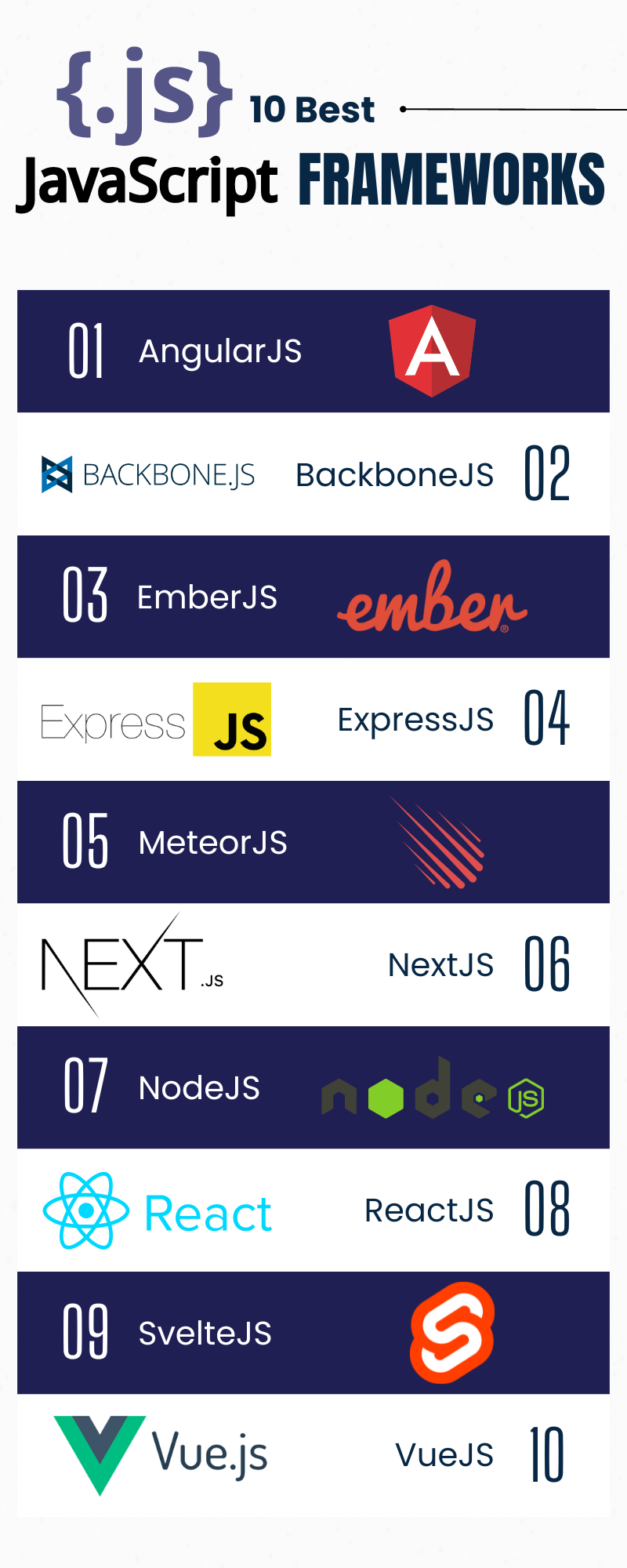Blitz News Digest
Stay updated with the latest trends and insights.
Frameworks at Play: Choosing Your JavaScript Playground
Discover the ultimate guide to selecting the perfect JavaScript framework and unlock your coding potential in the playground of possibilities!
Exploring the Top JavaScript Frameworks: A Comprehensive Guide
In the ever-evolving landscape of web development, JavaScript frameworks have become essential tools for creating dynamic and interactive applications. This comprehensive guide explores the top frameworks that developers rely on today. Among these, React, Angular, and Vue.js stand out as the most popular choices, each offering unique features and benefits. Whether you're building a single-page application or a complex web platform, understanding the strengths of these frameworks can significantly enhance your development process.
1. React: Developed by Facebook, React is renowned for its component-based architecture, enabling developers to build reusable UI components.
2. Angular: A robust framework maintained by Google, Angular is favored for its two-way data binding and dependency injection features, making it ideal for building large-scale applications.
3. Vue.js: Known for its ease of integration, Vue.js offers a progressive approach, allowing developers to adopt it gradually.
As we delve deeper into this guide, we will analyze the performance, learning curve, and community support of each framework, helping you make an informed decision for your next project.

Which JavaScript Framework is Right for Your Project? Key Factors to Consider
Choosing the right JavaScript framework for your project can significantly influence development speed and the final product's performance. Consider the scale and complexity of your application. For smaller projects or simple web pages, lightweight frameworks like Vue.js or Alpine.js can provide ease of use and quick setup. On the other hand, if you're working on a complex, large-scale application, frameworks like Angular or React might be more appropriate due to their robust features and strong community support.
Another key factor is the learning curve associated with the framework. If your team is already proficient in a specific framework, it may be wise to continue using it rather than switching to a new one that requires extensive learning and adaptation. Additionally, consider the long-term maintenance and community support of the framework. A framework with an active community can offer invaluable resources like tutorials, plugins, and troubleshooting advice, ultimately contributing to the sustainability of your project.
The Future of JavaScript Frameworks: Trends and Innovations to Watch
The landscape of JavaScript frameworks is continuously evolving, driven by the need for faster, more efficient, and user-friendly web applications. In recent years, frameworks like React, Vue.js, and Angular have gained immense popularity, setting the stage for emerging trends. One significant trend we're witnessing is the rise of micro-frontends, allowing developers to build scalable applications by breaking them down into smaller, independent units. This innovation promotes flexibility and fosters collaboration across teams, ultimately enhancing the development process.
Another critical area of innovation lies in server-side rendering (SSR) and static site generation (SSG). Frameworks such as Next.js and Nuxt.js are leading the charge, offering improved performance, SEO benefits, and enhanced user experience. Additionally, the integration of TypeScript in JavaScript frameworks has become increasingly prevalent, providing developers with better tooling and type safety. As we look to the future, keeping an eye on these trends and innovations will be essential for developers to stay competitive in a rapidly changing digital landscape.